Filter by

Developments in Medical Image Processing and Computational Vision
This book presents novel and advanced topics in Medical Image Processing and Computational Vision in order to solidify knowledge in the related fields and define their key stakeholders. It contains extended versions of selected papers presented in VipIMAGE 2013? IV International ECCOMAS Thematic Conference on Computational Vision and Medical Image, which took place in Funchal, Madeira, Portugal…
- Edition
- -
- ISBN/ISSN
- 9783319134079
- Collation
- xviii, 395 pages
- Series Title
- -
- Call Number
- 519
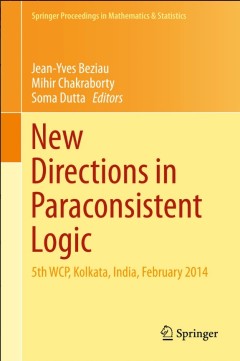
New Directions in Paraconsistent Logic:5th WCP, Kolkata, India, February 2014
The present book discusses all aspects of paraconsistent logic, including the latest findings, and its various systems. It includes papers by leading international researchers, which address the subject in many different ways: development of abstract paraconsistent systems and new theorems about them; studies of the connections between these systems and other non-classical logics, such as non-m…
- Edition
- 1
- ISBN/ISSN
- 978-81-322-2717-5
- Collation
- XI, 552
- Series Title
- Springer Proceedings in Mathematics & Statistics
- Call Number
- -
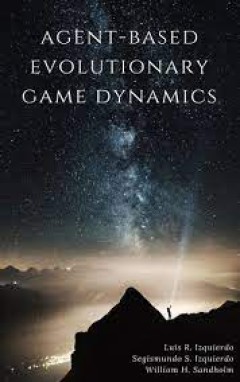
Agent-Based Evolutionary Game Dynamics
This book is a guide to implement simple agent-based evolutionary models using NetLogo. All the models we implement are agent-based, i.e. individual agents and their interactions are explicitly represented in the models. To formalise agents’ interactions we use the basic framework of Evolutionary Game Theory. NetLogo is a multi-agent programmable modeling environment used by hundreds of…
- Edition
- -
- ISBN/ISSN
- -
- Collation
- -
- Series Title
- -
- Call Number
- 510 IZQ a
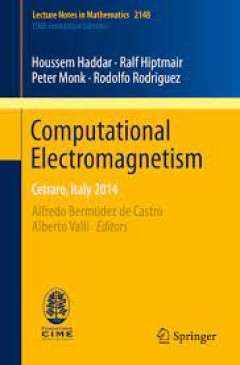
Computational Electromagnetism Cetraro, Italy 2014
Presenting topics that have not previously been contained in a single volume, this book offers an up-to-date review of computational methods in electromagnetism, with a focus on recent results in the numerical simulation of real-life electromagnetic problems and on theoretical results that are useful in devising and analyzing approximation algorithms. Based on four courses delivered in Cetraro …
- Edition
- -
- ISBN/ISSN
- 978-3-319-19306-9
- Collation
- -
- Series Title
- -
- Call Number
- -
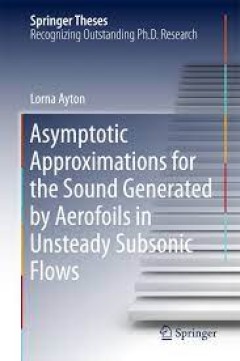
Asymptotic Approximations for the Sound Generated by Aerofoils in Unsteady Su…
This thesis investigates the sound generated by solid bodies in steady subsonic flows with unsteady perturbations, as is typically used when determining the noise generated by turbulent interactions. The focus is predominantly on modelling the sound generated by blades within an aircraft engine, and the solutions are presented as asymptotic approximations. Key analytical techniques, such as the…
- Edition
- -
- ISBN/ISSN
- 978-3-319-19959-7
- Collation
- -
- Series Title
- -
- Call Number
- -

Youngsters Solving Mathematical Problems with Technology The Results and Imp…
This book contributes to both mathematical problem solving and the communication of mathematics by students, and the role of personal and home technologies in learning beyond school. It does this by reporting on major results and implications of the Problem@Web project that investigated youngsters’ mathematical problem solving and, in particular, their use of digital technologies in tackling,…
- Edition
- -
- ISBN/ISSN
- 978-3-319-24910-0
- Collation
- -
- Series Title
- -
- Call Number
- -
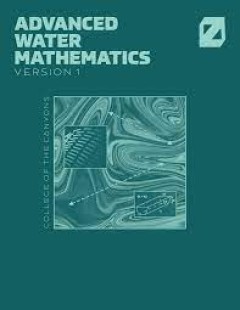
Advanced Water Mathematics
Overview: Learning and Understanding Mathematical Concepts in the Areas of Water Distribution and Water Treatment
- Edition
- -
- ISBN/ISSN
- -
- Collation
- -
- Series Title
- -
- Call Number
- 551.48 ALV a

XI Symposium on Probability and Stochastic Processes CIMAT, Mexico, November…
This volume features a collection of contributed articles and lecture notes from the XI Symposium on Probability and Stochastic Processes, held at CIMAT Mexico in September 2013. Since the symposium was part of the activities organized in Mexico to celebrate the International Year of Statistics, the program included topics from the interface between statistics and stochastic processes.
- Edition
- -
- ISBN/ISSN
- 978-3-319-13984-5
- Collation
- -
- Series Title
- -
- Call Number
- -

An Introduction to Continuous-Time Stochastic Processes: Theory, Models, and …
This textbook, now in its third edition, offers a rigorous and self-contained introduction to the theory of continuous-time stochastic processes, stochastic integrals, and stochastic differential equations. Expertly balancing theory and applications, the work features concrete examples of modeling real-world problems from biology, medicine, industrial applications, finance, and insurance using …
- Edition
- Ed. 1
- ISBN/ISSN
- 978-1-4939-2757-9
- Collation
- XVI, 482
- Series Title
- Modeling and Simulation in Science, Engineering and Technology
- Call Number
- 519 CAP i
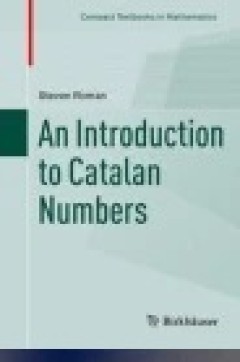
An Introduction to Catalan Numbers
This textbook provides an introduction to the Catalan numbers and their remarkable properties, along with their various applications in combinatorics. Intended to be accessible to students new to the subject, the book begins with more elementary topics before progressing to more mathematically sophisticated topics. Each chapter focuses on a specific combinatorial object counted by these numbers…
- Edition
- Ed. 1
- ISBN/ISSN
- 978-3-319-22144-1
- Collation
- XII, 121
- Series Title
- Compact Textbooks in Mathematics
- Call Number
- 519.6 ROM i
 Computer Science, Information & General Works
Computer Science, Information & General Works  Philosophy & Psychology
Philosophy & Psychology  Religion
Religion  Social Sciences
Social Sciences  Language
Language  Pure Science
Pure Science  Applied Sciences
Applied Sciences  Art & Recreation
Art & Recreation  Literature
Literature  History & Geography
History & Geography